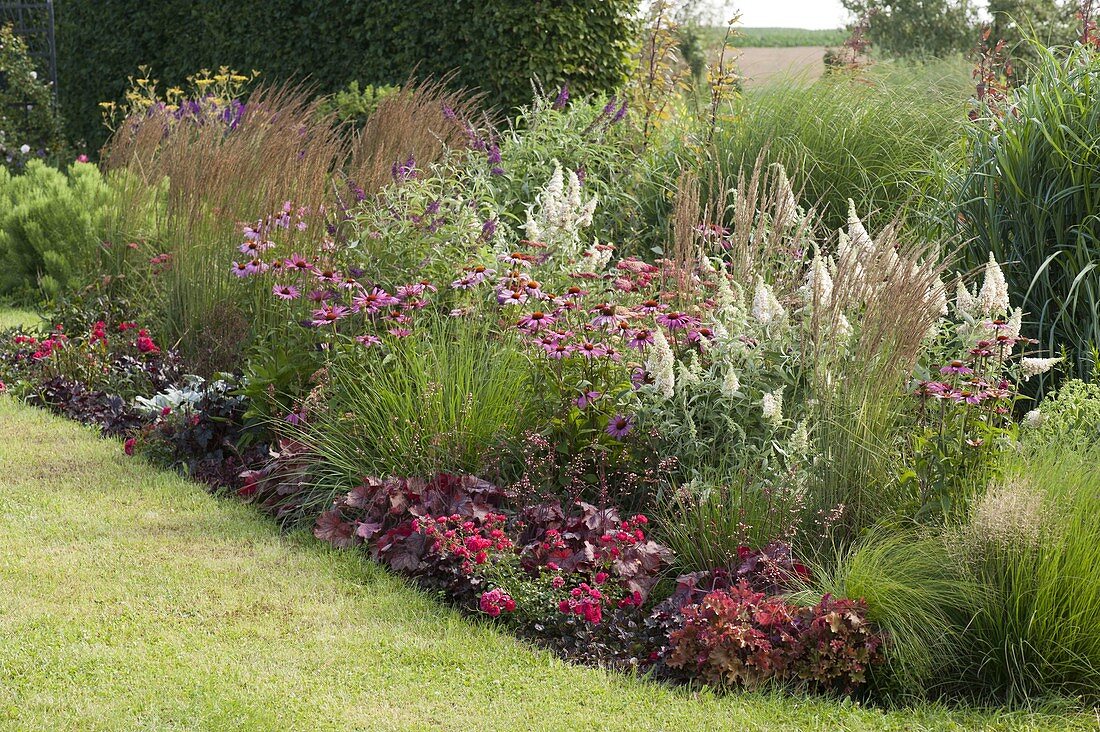
Sommerbeet mit Stauden und Gräsern Bild kaufen 12174662
Rodzaj perowskia reprezentowany jest przez siedem gatunków, ale największe znaczenie w ogrodnictwie mają trzy: perowskia łobodolistna Perovskia atriplicifolia, perowskia bylicowata Perovskia abrotanoides i mieszańcowa forma Perovskia 'Superba'. Perowskia łobodolistna występuje w Afganistanie, Himalajach i centralnej Azji.
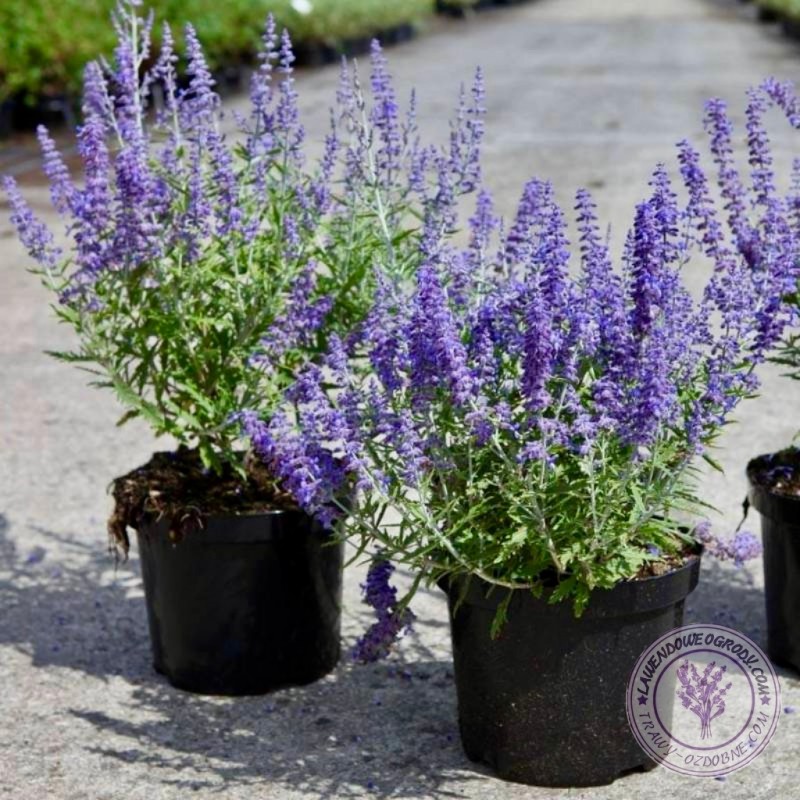
Perovskia atriplicifolia Lace Blue
Perovskia atriplicifolia, commonly called Russian sage, is a woody-based perennial of the mint family which typically grows 2-4' (less frequently to 5') tall and features finely-dissected, aromatic (when crushed), gray-green leaves on stiff, upright, square stems and whorls of two-lipped, tubular, light blue flowers tiered in branched, terminal.

Znalezione obrazy dla zapytania perowskia Sadzenie roślin, Trawy
Oryginalny krzew, odznaczający się drobnymi kwiatami w niebieskim kolorze. Posiada małe liście, mocno powcinane o srebrzysto-zielonej barwie. Jest rośliną mi.

Ogrody botaniczne, arboreta, parki Wojsławice sierpień 2010r 3
Salvia yangii, previously known as Perovskia atriplicifolia (/ p ə ˈ r ɒ v s k i ə æ t r ɪ p l ɪ s ɪ ˈ f oʊ l i ə /), and commonly called Russian sage, is a flowering herbaceous perennial plant and subshrub.Although not previously a member of Salvia, the genus widely known as sage, since 2017 it has been included within them. It has an upright habit, typically reaching 0.5-1.2.

Perowskia Perovskia atriplicifolia Little Spire® Sklep Zielona Pokusa
Russian sage, Perovskia atriplicifolia, is a handsome sub-shrub that reaches its peak performance towards the end of summer and into early autumn, when it produces masses of lavender-coloured flowers held on branching, aromatic stems. Perovskia atriplicifolia is a fantastic addition to a herbaceous border or gravel garden, growing alongside.

Kwiaty Rośliny Ozdobne Gruntowe
Perovskia Growing and Care Guide. Common Names: Russian Sage, Azure Sage. Syn. Salvia yangii Life Cycle: Hardy perennial. Height: 36 to 52 inches (90—130 cm). Native: Southwest and Central Asia. Growing Region: Zones 3 to 9. Flowers: Late summer. Flower Details: Blue, lavender. Small. Long lasting spires about one foot (30 cm). Foliage: Herbaceous/Sub-shrub. Silver-grey.

Perowskia łobodolistna Blue Spire Perovskia Blue Spire
Liściaste Perowskia Perowskia ( ilość produktów: 3 ) Perowskia sięga 1,5 metra, a wysokość maksymalna to 2 metry. Potocznie Perowskia zwana jest rosyjską szałwią. Roślina rozwija się tworząc krzaczastą formę złożoną z szarawych gałązek. Ma przeciwległe liście, jasnoszare i drobno krojone, dają zmięty aromatyczny zapach szałwii.

Lawenda Perowska Ogród Olszanica
Perovskia atriplicifolia) kwalifikowana jest jako krzew albo bylina. W cieplejszym klimacie lepiej zimuje i jej część naziemna nie przemarza. Wówczas jest uznawana za krzew. W naszym klimacie jest traktowana bardziej jako bylina, bo jej pędy (całkiem albo częściowo) w zimie przemarzają.

Salvia yangii (Perovskia atriplicifolia)
Arboretum w Wojsławicach jest ogrodem dendrologicznym będącym od 1988 roku filią Ogrodu Botanicznego Uniwersytetu Wrocławskiego. Bogate zbiory tego interesuj.

perowskia rosyjska szałwia www.ogrodowo.eu
Russian Sage. Perovskia atriplicifolia (Russian Sage) is a bushy, woody-based deciduous perennial with long terminal panicles of small, lavender-blue flowers, borne on thin white stems, clad with finely-dissected, aromatic gray-green leaves. Blooming for weeks from mid-summer to fall, this delicate-looking plant is tough and is resistant to.
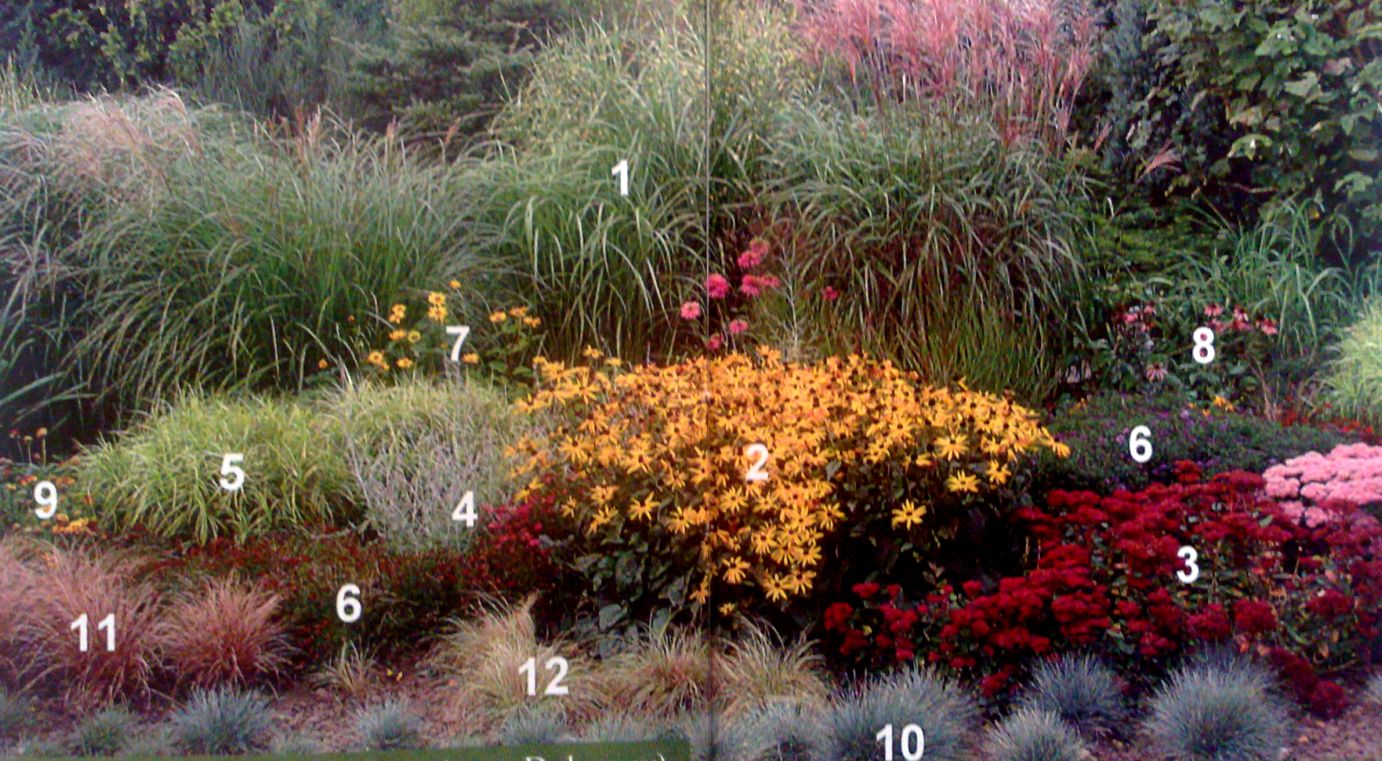
Wszystko o kwiatach i ogrodach sadzenie, nawożenie, pielęgnowanie
Perovskia is a genus of 7 species of deciduous shrubs from Central Asia to the Himalayas. They are grown for their attractive foliage and flowers. Genus name honors Russian general V. A. Perovski (1794 - c. 1857). 'Blue Spire' typically grows 2-3' (less frequently to 4') tall and features finely-dissected, aromatic, grayish-green foliage on.

Najlepsze trawy ozdobne do ogrodu. Uprawa traw w ogrodzie przydomowym
Perovskia (Russian Sage) is a superbly-adapted shrub, suited to harsh, erratic conditions where it's at its best. Perovskia is one of the most common perennial plants featured in drought-resistant landscapes. Fertile soil and too much water make the Perovskia plants lanky and will dull the flower color. "I feel very strongly that good garden.

Z czym łączyć trawy ozdobne eogrody Porady
Perovskia is a bush that is best planted in fall or at the beginning of spring. The ideal planting season for most shrubs is always fall. Perovskia will thrive in light and well-draining soil, even though it may be poor. Adding soil mix upon planting will enhance settling in and the future blooming.
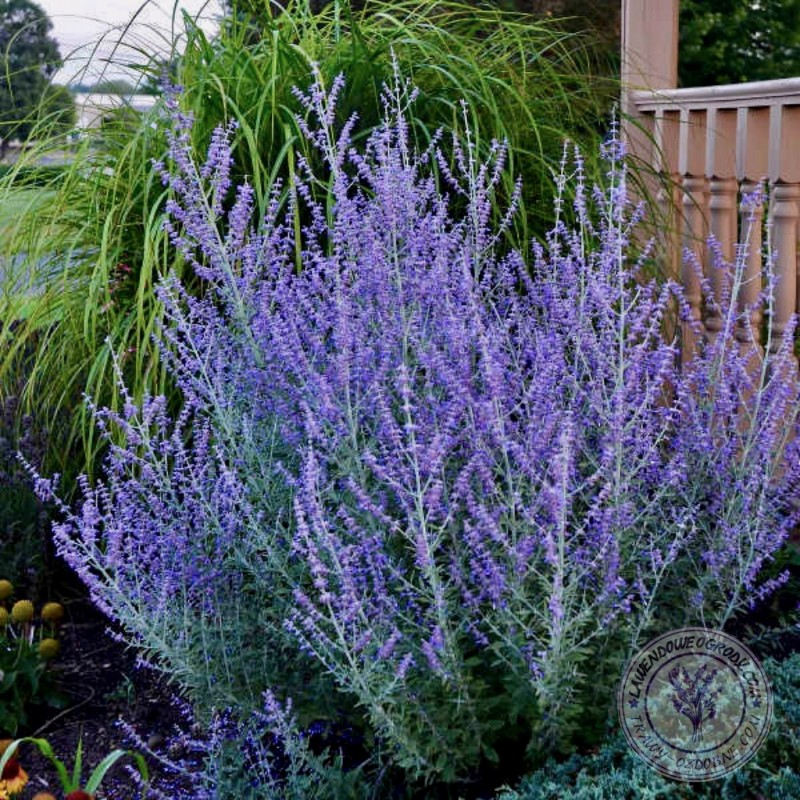
Perovskia atriplicifolia Rocketman
It grows in a multi-stemmed clump and has a loose, but upright habit. By the end of the summer, the plants are typically 3 to 4 feet tall. Flowers begin opening in late July and continue for up to two months, with tiny blossoms covering the entire plant from top to bottom. From a distance the plants look like a purple-blue haze.
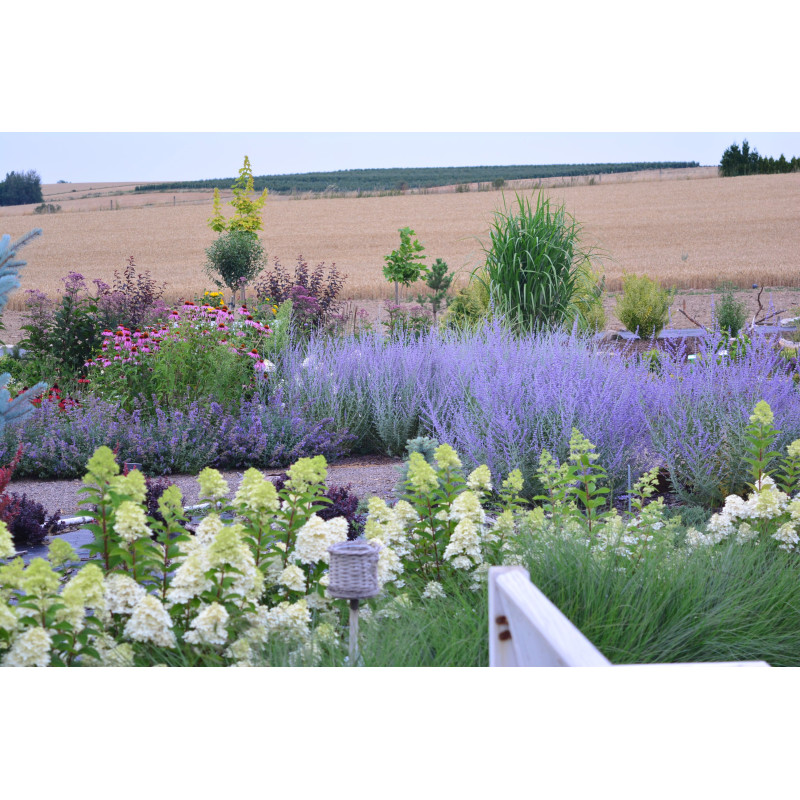
Perowskia 'Russian Sage'
Russian sage, or Perovskia, is a late summer blooming perennial that bursts into flower like a cloud of blue. It goes from a hazy, pale blue to a jubilant azure. The long panicles of flowers become increasingly brilliant as they open. Russian sage is a woody subshrub. Although its branches are woody, like a shrub, the top portion of the plant.

Ozdobne trawy na balkonie co wybrać? Deccoria.pl
218 11K views 1 year ago Perowskia (Perovskia) nazywana jest również rosyjską szałwią lub lawendą. Cechuje się srebrzysto-zielono-niebieskim wybarwieniem liści oraz pastelowo-niebieskim.